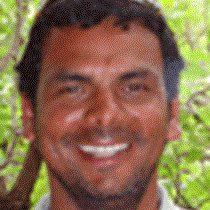On Saturday morning, the National Geographic Islander anchored at the open crater of Genovesa Island in the northernmost part of the archipelago. There are two great visitor sites on Genovesa. After some early morning kayaking along the coast in the company of birds everywhere, we disembarked at Darwin Bay. We made a nice wet landing on a white sand beach close to an intense nesting area for a large number of seabirds.
After landing on the beach, we organized the explorers in three groups, some going for a short walk and others going for a longer hike. Everyone had the opportunity to hike very close to the dry vegetation of the coast where the top attractions are red-footed boobies and swallow-tailed gulls. It was undeniably intense to see this incredible number of bird species gathered in one place. The experience was fantastic.
After two hours of walking, some explorers went back to the ship to get ready for deepwater snorkeling at the western flank of the crater. Despite our high expectations, we were surprised and delighted to see hammerhead sharks and turtles, along with a great number of tropical and reef fish. Our last time snorkeling in Galápagos was definitely something very special.
In the afternoon, the expedition set course for a second visitor site called Prince Phillip’s Steps, a dry landing area. Once we got passed the 47 high steps, we reached an area that seemed like walking into a great nature documentary. The dry vegetation was teeming with birds so friendly and so unaware of our presence that it felt unreal. Along the path, not to long after disembarking, we came across a scene that has made this visitor site so famous: many short-eared owls surrounded by boobies and finches and doves. An amazing sight!
We wrapped up our visit by walking along a very exposed lava field where the scenery could not be more inspiring. Thank you, Galápagos, for memories that will last forever.







